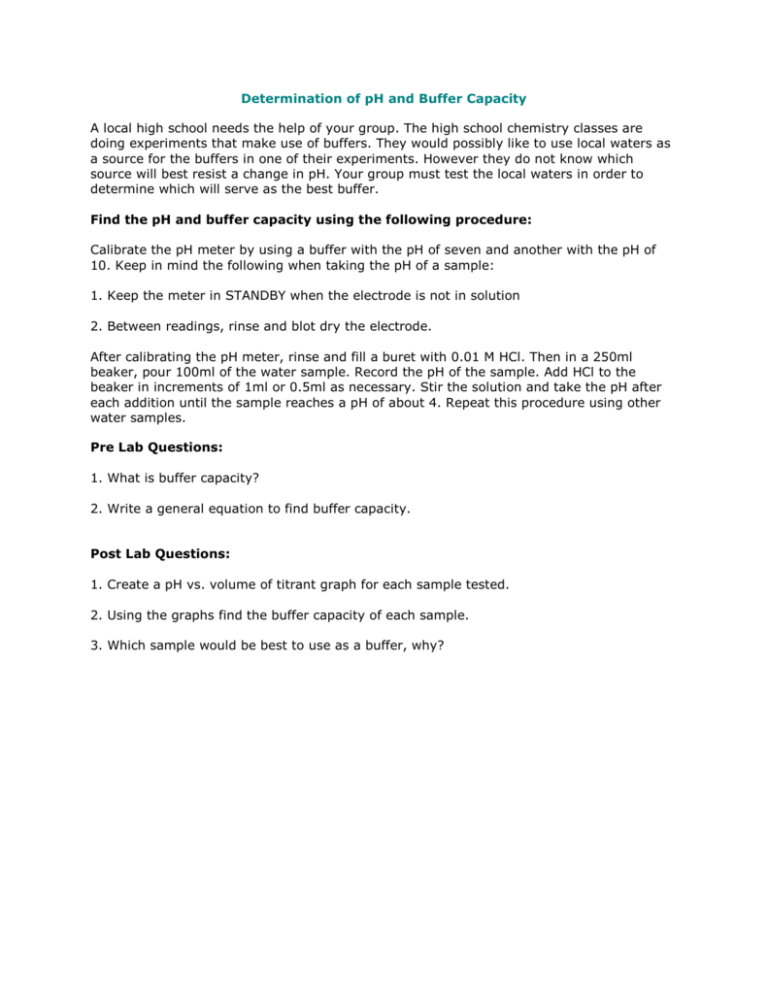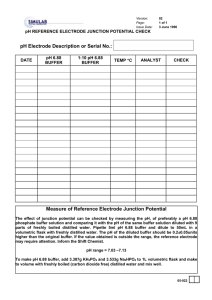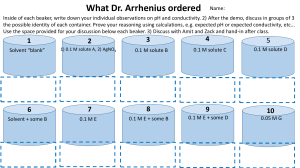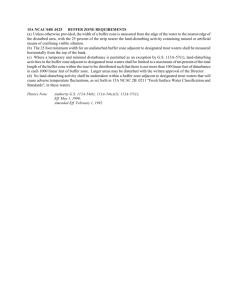Determination of pH and Buffer Capacity
advertisement

Determination of pH and Buffer Capacity A local high school needs the help of your group. The high school chemistry classes are doing experiments that make use of buffers. They would possibly like to use local waters as a source for the buffers in one of their experiments. However they do not know which source will best resist a change in pH. Your group must test the local waters in order to determine which will serve as the best buffer. Find the pH and buffer capacity using the following procedure: Calibrate the pH meter by using a buffer with the pH of seven and another with the pH of 10. Keep in mind the following when taking the pH of a sample: 1. Keep the meter in STANDBY when the electrode is not in solution 2. Between readings, rinse and blot dry the electrode. After calibrating the pH meter, rinse and fill a buret with 0.01 M HCl. Then in a 250ml beaker, pour 100ml of the water sample. Record the pH of the sample. Add HCl to the beaker in increments of 1ml or 0.5ml as necessary. Stir the solution and take the pH after each addition until the sample reaches a pH of about 4. Repeat this procedure using other water samples. Pre Lab Questions: 1. What is buffer capacity? 2. Write a general equation to find buffer capacity. Post Lab Questions: 1. Create a pH vs. volume of titrant graph for each sample tested. 2. Using the graphs find the buffer capacity of each sample. 3. Which sample would be best to use as a buffer, why?











